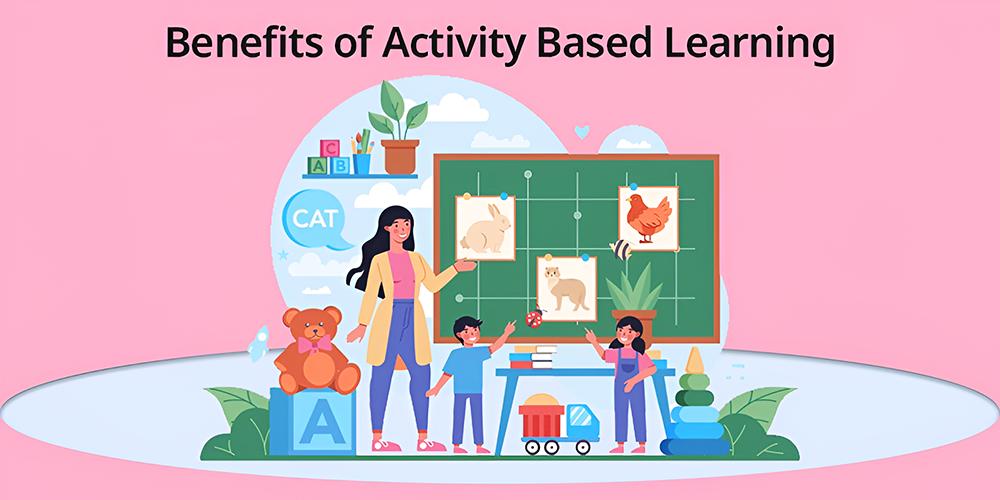The Role of Activity-Based Education in Promoting Student Engagement
posted on Mar 06, 2025
Traditional learning methods often lead to passive listening and disengagement among students. However, activity-based education focuses on interactive learning, ensuring students remain engaged and develop essential skills

Introduction
Education is no longer confined to rote learning and passive classroom lectures. With the evolving needs of the 21st century, schools are adopting activity-based education to make learning more engaging and effective. This approach encourages students to participate actively in the learning process, making education more interactive, enjoyable, and meaningful. Institutions like BGS Vijnatham School, one of the best schools in Greater Noida West, have embraced this method to foster critical thinking, creativity, and problem-solving skills among students.
What is Activity-Based Education?
Activity-based education is a teaching methodology that focuses on experiential learning rather than theoretical instruction. It involves hands-on activities, group discussions, role-playing, experiments, and project-based learning to help students grasp concepts in a practical and engaging manner. This approach shifts the focus from teacher-centered instruction to student-driven learning, where children actively participate in lessons rather than just listening to lectures.
Benefits of Activity-Based Education
- Enhances Student Engagement
Traditional learning methods often result in passive listening, leading to boredom and disinterest. Activity-based learning, on the other hand, keeps students engaged by allowing them to explore concepts through real-life applications.
- Encourages Critical Thinking and Problem-Solving
When students engage in interactive activities, they learn to analyze situations, think critically, and develop problem-solving skills. For example, science experiments, group discussions, and debates encourage logical reasoning and independent thinking.
- Promotes Better Retention and Understanding
Studies show that students retain information better when they learn through experience. Activity-based education ensures that concepts are understood deeply, as students apply them practically rather than memorizing facts.
- Develops Social and Communication Skills
Collaborative activities such as group projects, role-playing, and presentations help students improve their communication and teamwork skills. These experiences prepare them for real-world situations where interpersonal skills are essential.
- Encourages Creativity and Innovation
Hands-on learning fosters creativity by allowing students to explore different ways of solving problems. Activities such as storytelling, art projects, and science experiments enable students to think outside the box and develop innovative ideas.
- Caters to Different Learning Styles
Every student has a unique learning style—some learn best through visuals, while others prefer hands-on activities or verbal discussions. Activity-based learning accommodates various learning preferences, making education more inclusive and effective.
Practical Implementation of Activity-Based Learning
Educational institutions worldwide are incorporating activity-based education through various methods, including:
- Project-Based Learning – Assigning real-world projects where students research, analyze, and present their findings.
- Experiments and Practical Applications – Conducting science experiments, mathematical models, and real-life applications of concepts.
- Storytelling and Role-Playing – Using drama, storytelling, and reenactments to explain historical events, literature, or moral values.
- Educational Games and Simulations – Utilizing gamification and digital simulations to enhance engagement and understanding.
- Field Trips and Outdoor Learning – Taking students outside the classroom for nature walks, museum visits, or industry tours to experience learning firsthand.
Conclusion : The Impact of Activity-Based Education on Student Performance
Students who engage in activity-based learning demonstrate higher academic performance, improved problem-solving skills, and greater enthusiasm for learning. Schools that integrate this approach see a significant boost in student participation, attendance, and overall development. For instance, institutions like BGS Vijnatham School, one of the best schools in Greater Noida West, incorporate activity-based learning strategies to nurture curiosity and academic excellence among students.
By making education interactive, enjoyable, and meaningful, activity-based learning transforms the traditional education system into a dynamic and engaging experience. As more schools adopt this approach, students become more confident, capable, and prepared for the challenges of the future.